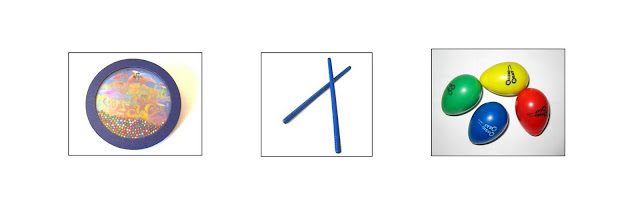Triangle
The triangle is a popular percussion instrument that can be a good addition to your Rhythm Bag. The triangle provides the opportunity to work on several objectives such as developing fine motor skills, increasing motor coordination and decreasing auditory sensitivities.
To play the triangle, one holds a bar or loop that is attached to the top of the triangle with one hand and strikes the triangle with the beater held in the other hand. The triangle can also be suspended from a music stand.
The sound of a triangle can be described as sharp or tinny and can cause overstimulation in children with auditory sensitivities. Don't ever force a child to play the triangle if it causes obvious distress, instead, show them how to make a soft sound and see if they would like to hold and explore it.

.jpg)





.jpg)